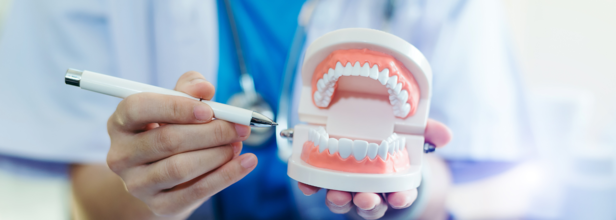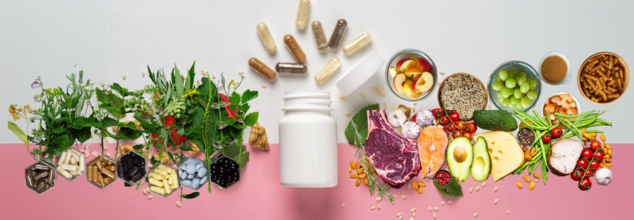
Image Credits: Canva
Subtle Symptom Of Lip Discoloration Could Be A Sign 'Blood Leaking Backwards' Due To Rare Heart Defect
When we hear of any 'heart disease', high blood pressure or chest pain often come to mind. But what if your lips were quietly warning of an undiagnosed, life-threatening heart condition? A rare congenital defect called Ebstein’s anomaly may do just that—and many people don’t even realize it.
This congenital defect in the heart may go undetected for years, until a small indication such as blue or greyish tinting of the lips or nails indicates something much more critical: your blood may be circulating in the wrong direction inside your heart. Our bodies tend to communicate with us in soft, subtle language. A hint of blue in your lips, unexplained fatigue, or difficulty breathing could be more than just everyday exhaustion—they may be clues pointing to a serious underlying heart condition.
What Is Ebstein’s Anomaly?
Ebstein's anomaly is a rare congenital heart defect—i.e., it exists at birth. It occurs in about one out of every 200,000 live births and represents fewer than 1% of all congenital heart defects. Although rare, it is a serious condition that needs to be monitored closely and treated.
The condition mostly influences the tricuspid valve, which is among the four heart valves that govern blood circulation into and out of the heart. In a normal heart, the tricuspid valve directs the blood in the right direction from the right atrium to the right ventricle. The valve in persons with Ebstein's anomaly is deformed and fails to seal correctly, making it possible for blood to pass backward—a situation referred to as regurgitation.
This reversed flow can enlarge the upper chamber (right atrium) and shrink and weaken the lower chamber (right ventricle), decreasing the efficiency of the heart. In the long run, this extra workload may result in heart failure, provided it is not treated.
Symptoms of Ebstein's Anomaly
Although most individuals with Ebstein's anomaly have no symptoms during childhood, others become aware of the condition years after it occurred—usually during tests for irregular heart rhythms or difficulty breathing on exertion.
One of the most subtle yet revealing symptoms? Blue or grey discoloration on the lips and fingernails, which is known as cyanosis. It's a sign of inadequate oxygen flow—meaning not enough oxygenated blood is being efficiently pumped around the body.
What is more concerning is that such discoloration may be less apparent on darker-skinned individuals, so early detection is even more difficult. In most instances, these symptoms are overlooked or blamed on other factors such as cold or tiredness.
Why Is Ebstein's Anomaly Often Misdiagnosed or Missed?
Even with warning signs, Ebstein's anomaly can be overlooked, particularly in people with less severe forms of the condition. Since many of the symptoms are nonspecific—such as fatigue, dizziness, or palpitations—they can be attributed to stress, anxiety, or lifestyle issues.
It is sometimes identified in babies at birth during routine tests, particularly if a heart murmur is heard. A murmur is a whooshing noise caused by turbulent blood flow through the heart, usually picked up by an examining physician with a stethoscope.
Most adults do not receive a diagnosis until much later, usually while being screened for atrial septal defects (ASD) or patent foramen ovale (PFO)—both of which occur commonly in conjunction with Ebstein's anomaly.
Risks of Untreated Ebstein's Anomaly
If left untreated or undiagnosed, Ebstein's anomaly can cause severe complications, such as:
- Enlargement and weakening of the heart
- Heart rhythm disturbances (arrhythmias)
- Increasing heart failure
- Stroke or blood clotting due to pooling of blood
The British Heart Foundation alerts that the reversed flow of blood can put severe wear and tear on the heart muscle over time, causing worsening cardiac function and potentially fatal consequences.
Is there a Treatment for Ebstein's Anomaly?
Treatment of Ebstein's anomaly is based on several factors, such as the severity of the malformation, whether there are symptoms, and associated heart disease. Mild cases might only require follow-up and medication, whereas severe presentations might necessitate surgical correction or valve replacement.
In certain instances, catheter-based interventions can be employed to fix irregular heart rhythms or seal accompanying defects. More complicated cases might involve open-heart surgery, and in extreme situations, heart transplantation is an option.
More sophisticated treatment regimens now also encompass dual immunotherapy regimens and targeted radiotherapy, particularly for patients who could be diagnosed later in life with added complications.
With growing awareness of such unusual congenital cardiac anomalies as Ebstein's anomaly, it is all the more imperative that those affected—and their doctors—take careful notice of these symptoms, particularly if they increase or persist over time.
If you or someone close to you notice symptoms of bluish coloration around the lips, palpitations, or abnormal breathlessness, have a detailed cardiac assessment undertaken. Quick detection and intervention can make all the difference in overall well-being and quality of life down the road.

Credits: Canva
World Health Day 2025: What Your Mouth Is Trying to Tell You?
When we think about staying healthy, dental hygiene is often left off the list. It is the most basic one, but is also the most ignored one. Amar Singh, who is the founder and CEO of Clove Dental, a chain of dental clinics says that it is because the problems that pertains to oral health are not "life threatening", which is why people do not understand the need to keep their dental health in check. However, this World Health Day, we take a step back from this perceived notion and dig deeper into dental health and how your mouth can tell a lot about your overall health. In an exclusive interview with Lt Gen Dr Vimal Arora, the Chief Clinical Officer at Clove Dental, who has 40 years of experience as a dentist and had served in the Indian Army too, we understood that oral health is not just about a pretty smile, but about protecting your entire system from worsening chronic illnesses.
The Mouth-Body Connection
“There is now scientific evidence, published in top medical journals, that shows how oral infections can significantly worsen pre-existing systemic diseases,” says Dr. Arora. This isn’t just a theory — it’s a medically established fact.Take diabetes, for instance. People with gum infections often find it harder to control their blood sugar levels. “If you're suffering from diabetes and you have a gum infection, your diabetes will not be well controlled. In fact, it may worsen,” he adds. The same applies to heart diseases. Oral infections can increase inflammation in the body, potentially triggering or worsening cardiovascular problems.
This is concerning especially for those people who may already be managing conditions like hypertensions, arthritis, or respiratory illness. Poor oral health can actually sabotage their efforts to stay stable.
Dental Health's Connection With Mothers And Babies
Dr. Arora also highlights the overlooked risks that pregnant women face when they neglect their dental hygiene. “If you are pregnant and suffer from periodontitis or even gingivitis — essentially poor gum health — you are at risk of having a preterm or low-birth-weight baby,” he says.This isn’t just theory; it’s a well-documented risk in obstetric dentistry. Pregnant women are encouraged to get dental check-ups not just for themselves, but for the health of their unborn child.
ALSO READ: Astronaut Rakesh Sharma Had To Get His Wisdom Tooth Extracted Before His Trip To Space
Every Disease Leaves A Trace In The Mouth
“Your tongue is a true mirror of your oral and general health,” says Dr. Arora. The correlation therefore goes beyond just gums and teeth. Dentists are trained to detect early signs of systemic disorders simply by examining the tongue's color, coating and texture.A pale tongue might indicate iron deficiency, while a coated tongue could be a sign of digestive issues or a viral illness. “Sometimes, we ask patients if they've had their blood work done, based purely on what we see on their tongue,” he adds. In some cases, dentists can even detect undiagnosed diabetes or early signs of nutritional deficiencies.
But, Why Is Oral Health Still Ignored?
Despite these connections, oral health remains one of the most neglected aspects of personal healthcare. Dr. Arora believes this is partly due to a lack of awareness and the perception that dental problems are not "serious enough."“People often wait until they’re in pain before they see a dentist, but by then, the damage might already be affecting other parts of the body,” he says. Preventive check-ups, regular cleaning, and treating gum infections early on can go a long way in improving not just oral health, but overall wellness.

World Health Day 2025: Is The Wellness Culture Making Us Sicker?
As we mark World Health Day 2025, the global conversation is shifting from illness prevention to something more nuanced — wellness. The $1.5 trillion wellness industry has made meditation mainstream, normalized therapy, and placed kombucha next to soda in supermarket aisles. But beneath this shiny exterior, experts are beginning to ask: is our obsession with wellness actually making us sicker?
Today, wellness is everywhere — from TikTok routines to boardroom strategies, from luxury retreats to insurance incentives. While it’s made healthy living more accessible and aspirational, it’s also blurred the line between self-care and commercialisation. Is the culture that's supposed to heal us now quietly overwhelming us?
The concept of wellness isn’t new. Dr. Halbert L. Dunn introduced it in the late 1950s, defining it as an “active, ongoing pursuit” of health — a holistic way of living that goes beyond the mere absence of disease. His vision was simple, personal, and rooted in self-defined wellbeing.
Fast forward to 2025, and that same philosophy has become a cultural phenomenon — and a highly profitable one. From glow-enhancing supplements to personalised DNA-based diets, wellness today is packaged, branded, and often algorithmically marketed to anyone with a screen. And while some of these tools can be genuinely transformative, many come with a hidden cost — not just financial, but emotional and psychological.
Wellness as a Culture vs. Wellness as a Commodity
“Wellness as a culture is a fantastic thing to have happened to us,” says Khushboo Jain Tibrewala, a Nutritionist and Diabetes & Inflammation Specialist. “For too long, we celebrated poor habits — skipping meals, binge drinking, neglecting sleep. Now, people want to eat better, sleep better, move more, and manage their stress. That’s progress.”
But the problem, Tibrewala adds, is when wellness shifts from being a way of living to a business model. “Everything is capitalised — yoga, veganism, even mindfulness. Wellness influencers, with little or no formal training, promote products they barely understand. The industry has become more about aesthetics than authenticity.”
What began as a movement to foster simplicity has been complicated by commercial interests. Designer smoothie bowls, "clean girl" morning routines, and superfood fads can create unattainable standards, particularly when curated through social media filters. And this packaging often distracts us from what really matters — rest, nourishment, sunlight, movement, and meaningful connection.
Is the Wellness Industry Helping Us Take Control or Taking Control of Us?
To its credit, the wellness industry has democratized access to health tools. Ten years ago, meditation was a niche practice, nutrition was linked solely to weight loss, and mental health was brushed under the rug. Today, these ideas are mainstream.
“Nutritionists are managing chronic conditions, fitness is no longer confined to gyms, and therapy is seen as a form of strength, not weakness,” Tibrewala shares. “The industry is not pushing an agenda — it's offering choices. But what we do with those choices is what really matters.”
Still, the sheer volume of tools and voices in the wellness space can be overwhelming. From glucose monitors and cold plunges to chakra-aligning crystals and adaptogenic mushrooms — it can feel like you’re never doing enough. But as Tibrewala wisely reminds us, “The danger isn’t in having too many options. It’s in forgetting that they’re optional.”
The Rise of Wellness Anxiety: When Self-Care Turns into Self-Surveillance
One of the unintended consequences of this booming industry is what some experts now call “wellness anxiety.” The pressure to constantly optimize — our diets, our workouts, our sleep — has left many feeling more stressed than serene. In workplaces, schools, and even healthcare systems, wellbeing is increasingly monitored, quantified, and incentivized, turning it into a performance metric rather than a personal journey.
“True wellness is simple, even boring,” Tibrewala notes. “Eat local, move your body, get sunlight, rest deeply. You don’t need the latest hack. You need honesty — with your body, your mind, and your habits.”
How Much Should We Really Value 'Wellness' Experts And Their Routines?
Alarmingly, chronic health conditions like diabetes, obesity, and hypertension are showing up in teenagers and young adults at unprecedented rates. In this context, the role of wellness “experts” becomes critical — and concerning.
“We absolutely need to value experts,” says Tibrewala, “but not all wellness influencers are experts. Many lack formal training or scientific grounding. When the stakes are this high — when a teenager is diagnosed with insulin resistance or a 22-year-old has high blood pressure — we cannot afford to follow advice based on trends.”
Her recommendation? Build a circle of trust: qualified professionals who not only understand the science but also bring emotional intelligence into their care — a nutritionist, therapist, physiotherapist, or GP. “True wellness needs coordination. It’s not about chasing fads but building a sustainable system of care.”
On this World Health Day, perhaps the most important health decision we can make is to pause. To question. To remember that wellness isn’t a trend to follow but a foundation to build on.
In its purest form, wellness is about ease — not effort. It’s not about buying more, tracking more, or hacking more. It’s about living better, with intention and simplicity. The future of health may be full of tech, tools, and trends, but the heart of it remains timeless.
As Tibrewala puts it, “Trust the routines. But only after you trust the provider. That one choice can change the trajectory of your health — or your child’s — for life.”
Khushboo Jain Tibrewala is a Nutritionist and Diabetes & Inflammation specialist at The Health Pantry in India

(Credit-Canva)
Can Going Angry To Bed Be Bad For Your Health?
Anger can often cloud people and their judgment. It is very common to make rash decisions when you are emotional or overwhelmed and can cause you and your loved ones harm as well. Whenever a new situation arises, it is best to de-escalate it rather than getting angry and causing a ruckus.
Even when it is a kerfuffle with a loved one, it is best to resolve things calmly. Many people believe that going to bed angry is not a good idea, one must always put things to rest by then. However, is it true?
How Does Anger Affect Your Well-Being?
In a 2010 study published in Journal of Medicine and Life, researchers explored the bad ways that anger and mean actions can affect someone's health. The researchers looked at science papers from 2000 to 2010 that agreed with their starting idea. These papers showed that being angry, whether you show it or hide it, can cause different sicknesses. It can also change how people with a serious eating problem act, and it might be a reason why there are more car accidents.
To help people stay safe from these problems, the researchers think that just giving them medicine isn't the only answer. They also need help talking to someone about their feelings. This help should teach them ways to handle their anger without doing anything that could hurt their health or make them feel worse.
Why Not Going to Bed Angry Is Good?
Generally, going to sleep upset with your partner can create problems. The unresolved issue might just sit there, waiting to resurface. Experts explain that sleeping while angry can actually make your negative feelings stronger and harder to shake off. Holding onto anger can build up resentment and lead to unhealthy ways of expressing your emotions. Plus, being upset can make it hard to fall asleep, and poor sleep can worsen both your mood and your relationship.
When It Might Be Okay to Sleep on It?
However, there are times when going to bed before resolving a fight is the wiser choice. If the problem is a big one that can't be fixed quickly, staying up and arguing when tired won't help. You can agree to pause the discussion and revisit it when you're both rested. Sometimes, you might be too exhausted or your emotions are too high to think clearly. In these situations, trying to resolve things can make them worse. Taking a break for sleep can allow you to approach the issue with a fresh mind the next day. Also, if your argument has drifted away from the original problem and you're just going in circles, it's probably time to get some sleep and come back to it later with a clearer focus.
What to Do When You Are Angery?
If you often find yourselves going to bed angry or if you struggle to manage your anger in general, it might be helpful to seek support. Talking to a therapist, either individually or as a couple, can provide you with better communication skills and new perspectives on your relationship. A therapist can also help you understand the root of your anger and teach you healthy ways to cope. You might also consider anger management classes or support groups as a way to learn new strategies for dealing with conflict.
© 2024 Bennett, Coleman & Company Limited

